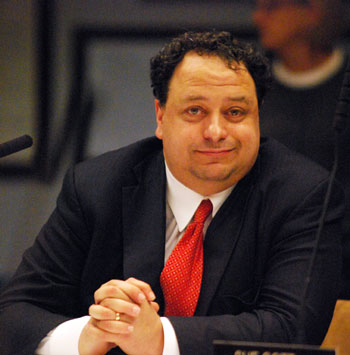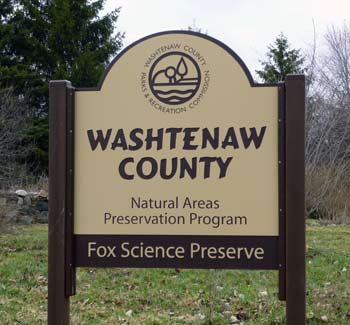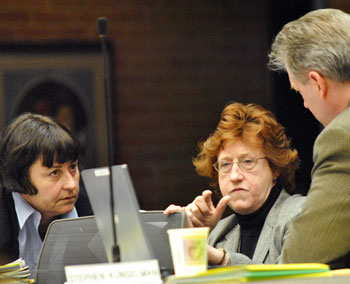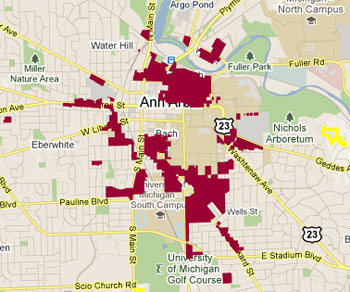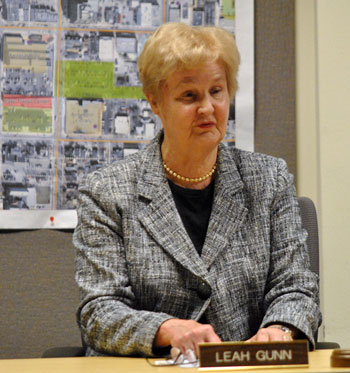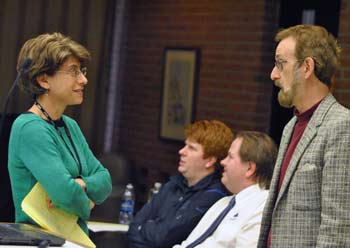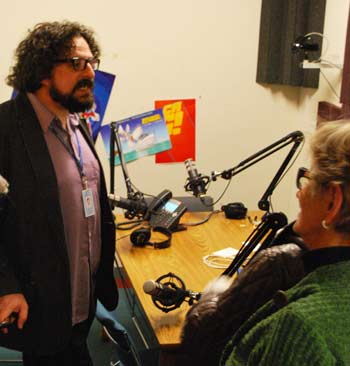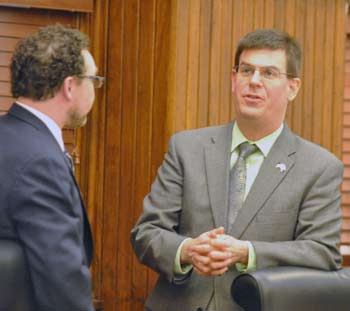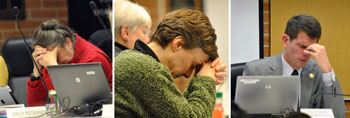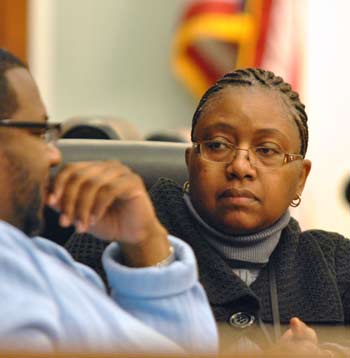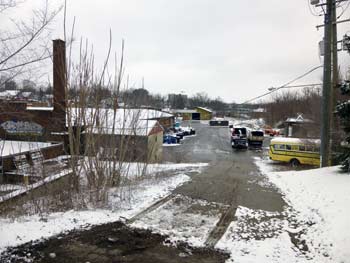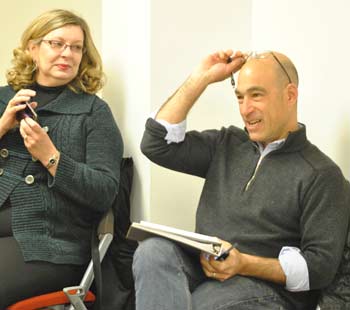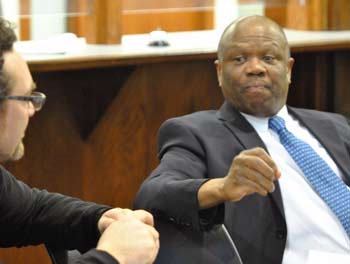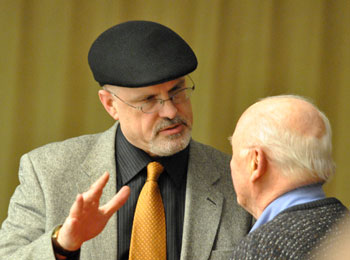Public Art Commission Seeks Student Input
Ann Arbor public art commission meeting (March 27, 2013): Public art commissioners hope to involve more students in their work – but no formal mechanism is yet in place to make that happen.
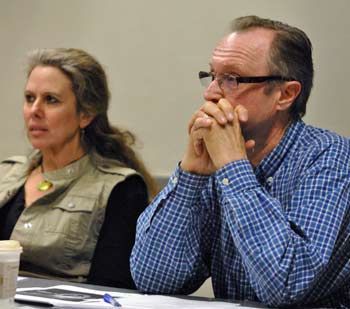
Ann Arbor public art commissioners Connie Brown and John Kotarski at AAPAC’s March 27, 2013 meeting. (Photos by the writer.)
At AAPAC’s most recent meeting, John Kotarski proposed adding three students to the nine-member commission as voting members. He suggested that the student commissioners be selected by: (1) the Ann Arbor Public Schools board of education; (2) the dean of the University of Michigan School of Art & Design; and (3) the Arts at Michigan program. Deb Mexicotte, president of the AAPS board, is also program coordinator for Arts at Michigan.
Ultimately, commissioners passed a resolution on a 5-1 vote asking that the city council consider adding students to the commission. Marsha Chamberlin dissented, saying she supported the concept of student involvement but didn’t like this approach. She’d rather handle it informally, perhaps by including students in the task forces that are set up for each project.
Chamberlin also noted that any change in AAPAC’s composition would require a revision to the city’s public art ordinance.
The city council committee that’s currently undertaking dramatic revisions to the public art ordinance has nearly completed its work, with plans to present recommendations to the full council on May 6. The recommendations include eliminating the Percent for Art funding mechanism and the concept of “pooled” funds from capital projects. Instead, the city council will designate specific capital projects to be “enhanced” with extra funding allocated for public art or architectural features, based on recommendations by AAPAC. [.pdf of draft ordinance revisions] [.pdf of most recent memo to city council regarding draft recommendations]
This Chronicle report includes a summary of the council committee’s April 18 meeting, which is probably the last one prior to presenting the recommendations – likely on May 6. The committee is suggesting that the council take a final vote on June 3, after soliciting public input through A2 Open City Hall.
In other action during the March 27 meeting, AAPAC approved its annual art plan. This year, because of uncertainty regarding the program’s future and a current moratorium on spending, the plan sets general goals rather than proposing new projects. Those goals are: (1) the creation of public art in more areas of the city and a commitment to balance the number of artworks throughout the city and its neighborhoods; (2) a focus on high use and visibility as locations for public art; and (3) an emphasis on putting public art in underserved neighborhoods.
AAPAC also selected Josh Wiener, an artist from Denver, to work with landscapers and incorporate public art into a new rain garden at the corner of Kingsley and First. The $27,000 project was one of several for which funding had already been approved, prior to the council’s decision to temporarily halt spending on public art.
Commissioners discussed a range of other ongoing projects, including public art at the East Stadium bridge, Argo Cascades and the Justice Center lobby. A project that doesn’t include city funding is the Detroit Institute of Arts’ Inside|Out program. Installation of that artwork in Ann Arbor took place two days after AAPAC’s March 27 meeting. Framed replicas of paintings from the DIA collection were mounted at several locations in the downtown area, and free docent walking tours will be offered on Saturdays and Sundays, starting on April 27. The tours will leave from the Ann Arbor Hands-On Museum every half-hour between noon and 3 p.m.
Looking ahead, Chamberlin reminded commissioners that it’s time to solicit nominations for the annual Golden Paintbrush awards, which recognize local contributions to public art. The award winners are selected by AAPAC, with a presentation at an Ann Arbor city council meeting in June.
March 27 was the first meeting for AAPAC’s two new commissioners, Ashlee Arder and Nick Zagar. Arder, who works for ArtServe Michigan, took action during the meeting to set up a Twitter account for the commission: @AAPublicArt. [Full Story]




